Related Research Articles

Hendrick Avercamp was a Dutch painter during the Dutch Golden Age of painting. He was one of the earliest landscape painters of the 17th-century Dutch school, he specialized in painting the Netherlands in winter. His paintings are colorful and lively, with carefully crafted images of the people in the landscape. His works give a vivid depiction of sport and leisure in the Netherlands in the beginning of the 17th century. Many of Avercamp's paintings feature people ice skating on frozen lakes.

A pastel is an art medium that consist of powdered pigment and a binder. It can exist in a variety of forms, including a stick, a square, a pebble, or a pan of color, though other forms are possible. The pigments used in pastels are similar to those used to produce some other colored visual arts media, such as oil paints; the binder is of a neutral hue and low saturation. The color effect of pastels is closer to the natural dry pigments than that of any other process.

Emil Nolde was a German-Danish painter and printmaker. He was one of the first Expressionists, a member of Die Brücke, and was one of the first oil painting and watercolor painters of the early 20th century to explore color. He is known for his brushwork and expressive choice of colors. Golden yellows and deep reds appear frequently in his work, giving a luminous quality to otherwise somber tones. His watercolors include vivid, brooding storm-scapes and brilliant florals.

Paul Klee was a Swiss-born German artist. His highly individual style was influenced by movements in art that included expressionism, cubism, and surrealism. Klee was a natural draftsman who experimented with and eventually deeply explored color theory, writing about it extensively; his lectures Writings on Form and Design Theory, published in English as the Paul Klee Notebooks, are held to be as important for modern art as Leonardo da Vinci's A Treatise on Painting was for the Renaissance. He and his colleague, Russian painter Wassily Kandinsky, both taught at the Bauhaus school of art, design and architecture in Germany. His works reflect his dry humor and his sometimes childlike perspective, his personal moods and beliefs, and his musicality.

Degenerate art was a term adopted in the 1920s by the Nazi Party in Germany to describe modern art. During the dictatorship of Adolf Hitler, German modernist art, including many works of internationally renowned artists, was removed from state-owned museums and banned in Nazi Germany on the grounds that such art was an "insult to German feeling", un-German, Freemasonic, Jewish, or Communist in nature. Those identified as degenerate artists were subjected to sanctions that included being dismissed from teaching positions, being forbidden to exhibit or to sell their art, and in some cases being forbidden to produce art.

Watercolor or watercolour, also aquarelle, is a painting method in which the paints are made of pigments suspended in a water-based solution. Watercolor refers to both the medium and the resulting artwork. Aquarelles painted with water-soluble colored ink instead of modern water colors are called aquarellum atramento by experts. However, this term has now tended to pass out of use.
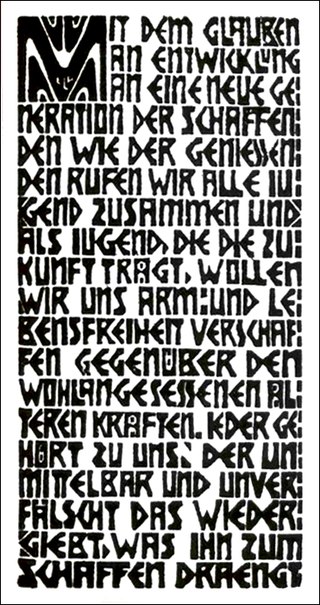
DieBrücke, also known as Künstlergruppe Brücke or KG Brücke, was a group of German expressionist artists formed in Dresden in 1905. The founding members were Fritz Bleyl, Erich Heckel, Ernst Ludwig Kirchner, and Karl Schmidt-Rottluff. Later members were Emil Nolde, Max Pechstein, and Otto Mueller. The seminal group had a major impact on the evolution of modern art in the 20th century and the creation of expressionism. The group came to an end around 1913. The Brücke Museum in Berlin was named after the group.
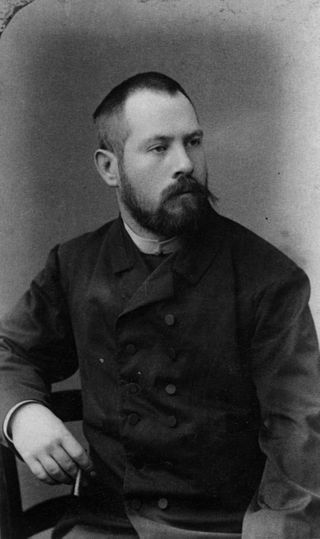
Lovis Corinth was a German artist and writer whose mature work as a painter and printmaker realized a synthesis of impressionism and expressionism.

Color field painting is a style of abstract painting that emerged in New York City during the 1940s and 1950s. It was inspired by European modernism and closely related to abstract expressionism, while many of its notable early proponents were among the pioneering abstract expressionists. Color field is characterized primarily by large fields of flat, solid color spread across or stained into the canvas creating areas of unbroken surface and a flat picture plane. The movement places less emphasis on gesture, brushstrokes and action in favor of an overall consistency of form and process. In color field painting "color is freed from objective context and becomes the subject in itself."

Charles Ephraim Burchfield was an American painter and visionary artist, known for his passionate watercolors of nature scenes and townscapes. The largest collection of Burchfield's paintings, archives and journals are in the collection of the Burchfield Penney Art Center in Buffalo. His paintings are in the collections of more than 109 museums in the USA and have been the subject of exhibitions at the Metropolitan Museum of Art, the Whitney Museum of American Art, the Hammer Museum, and the Museum of Modern Art, as well as other prominent institutions.
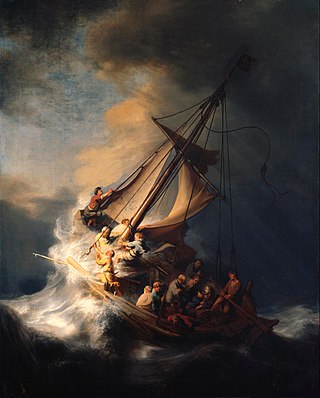
Marine art or maritime art is a form of figurative art that portrays or draws its main inspiration from the sea. Maritime painting is a genre that depicts ships and the sea—a genre particularly strong from the 17th to 19th centuries. In practice the term often covers art showing shipping on rivers and estuaries, beach scenes and all art showing boats, without any rigid distinction – for practical reasons subjects that can be drawn or painted from dry land in fact feature strongly in the genre. Strictly speaking "maritime art" should always include some element of human seafaring, whereas "marine art" would also include pure seascapes with no human element, though this distinction may not be observed in practice.

Painting is a visual art, which is characterized by the practice of applying paint, pigment, color or other medium to a solid surface. The medium is commonly applied to the base with a brush, but other implements, such as knives, sponges, and airbrushes, may be used. One who produces paintings is called a painter.

The Langlois Bridge at Arles is the subject of four oil paintings, one watercolor and four drawings by Vincent van Gogh. The works, made in 1888 when van Gogh lived in Arles, in southern France, represent a melding of formal and creative aspects. Van Gogh used a perspective frame that he built and used in The Hague to create precise lines and angles when portraying perspective.

Vincent van Gogh painted at least 15 paintings of olive trees, mostly in Saint-Rémy-de-Provence in 1889. At his own request, he lived at an asylum there from May 1889 through May 1890 painting the gardens of the asylum and, when he had permission to venture outside its walls, nearby olive trees, cypresses and wheat fields.

Landscape with Wheelbarrow is a watercolor on cream wove paper painting by the Dutch Post-Impressionist painter Vincent van Gogh. In 1883, Van Gogh painted a vast piece of land in emerald and chartreuse-like colors accompanied by a lonesome wheelbarrow in the middle ground along with red roofed cottages on the horizon line. The painting is accented with graphite. It is in permanent collection at the Cleveland Museum of Art.
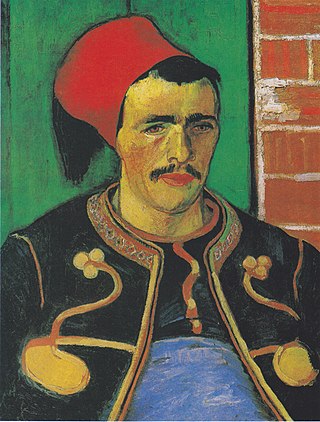
The Zouave is the subject of several sketches and paintings made by Vincent van Gogh in Arles, France in June 1888. The pieces range from close up oil painting portraits of the Zouave to full-body drawings. Van Gogh produced this collection of pieces during the period he spent in southern France, which many scholars regard as the zenith of his artistic career.Van Gogh nonetheless expressed frustration about his work during this time.
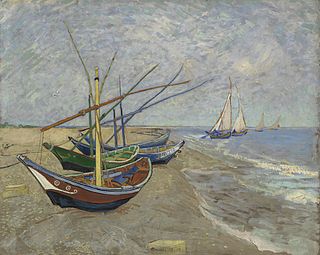
The French town of Saintes-Maries-de-la-Mer is the subject of a series of paintings that Vincent van Gogh made in June 1888. When Van Gogh lived in Arles, he took a week-long trip to Saintes-Maries-de-la-Mer on the Mediterranean Sea, where he made several paintings of the seascape and town.
Peter Howard Selz was a German-born American art historian and museum director and curator who specialized in German Expressionism.
Sunflowers is an oil-on-canvas painting by the German-Danish painter Emil Nolde, created in 1926. It was the first in a series of sunflower paintings, and also the first of more than fifty oil paintings on the same subject in Nolde's work. The sunflowers where a prominent motif among his flower paintings. The current painting has the dimensions of 72 by 90 cm, and is signed on the lower right edge of the canvas. It is held now in the Nolde Stiftung Seebüll.
Unpainted Paintings is a series of small-format watercolor-based paintings by German painter Emil Nolde, who gave them this title. He created these 1300 paintings between 1938 and 1945.
References
- ↑ Lloyd, Jill. "Emil Nolde". Oxford University Press. Retrieved March 24, 2014.